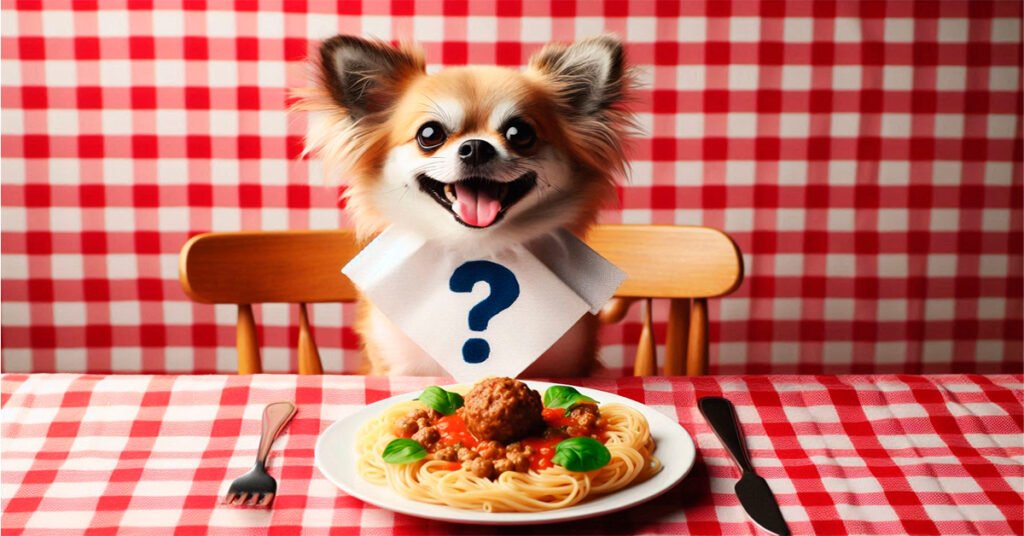
Pasta is a staple in many human diets, loved for its versatility and taste. As a dog owner, you might wonder if this popular food is safe and beneficial for your furry friend. In this article, we will explore whether can dogs eat pasta, the nutritional benefits it may offer, potential risks, and how to safely incorporate it into your dog’s diet.
Nutritional Benefits of Pasta for Dogs
Can dogs eat pasta? When given in moderation, pasta can be a part of your dog’s diet. Here are some of the nutritional benefits:
- Carbohydrates: Pasta is a good source of carbohydrates, which provide energy for active dogs.
- Fiber: Whole grain pasta can provide dietary fiber, which aids in digestion and helps maintain healthy bowel movements.
- Vitamins and Minerals: Pasta contains some vitamins and minerals such as B vitamins and iron, which contribute to overall health.
Types of Pasta Suitable for Dogs

Not all types of pasta are equally beneficial for dogs. When considering if dogs can eat pasta, here are the best types to consider:
- Plain Pasta: The best option is plain, cooked pasta without any sauces, spices, or additives.
- Whole Grain Pasta: Whole grain pasta is preferable as it contains more fiber and nutrients compared to refined pasta.
- Rice Pasta: For dogs with gluten sensitivities, rice pasta can be a good alternative.
Potential Risks and Precautions
While pasta can be beneficial, there are some potential risks and precautions to keep in mind when considering if can dogs eat pasta:
- Weight Gain: Pasta is calorie-dense, and overfeeding can lead to weight gain and obesity in dogs.
- Sauces and Additives: Avoid pasta with sauces, especially those containing garlic, onions, or other ingredients toxic to dogs.
- Portion Control: Pasta should be given in moderation as a treat or supplement to a balanced diet, not as a primary food source.
How to Introduce Pasta to Your Dog’s Diet
Introducing pasta to your dog’s diet should be done gradually, ensuring that dogs can eat pasta without any adverse effects:
- Start Small: Begin with a small portion of plain, cooked pasta to see how your dog reacts.
- Monitor for Reactions: Watch for any signs of digestive upset or allergic reactions. If your dog tolerates the pasta well, you can gradually increase the amount.
- Mix with Food: You can mix pasta with your dog’s regular food or serve it as a standalone treat.
- Use as a Topper: Pasta can be used as a tasty topper for kibble or other dog food to enhance the flavor and nutritional value.
Alternative Nutritional Sources for Dogs
If you are looking for other nutritious options for your dog, consider these products available on Amazon:
- Taste of the Wild High Prairie Canine Recipe: This dry dog food is made with high-quality ingredients, including bison and venison, providing an excellent source of protein and essential nutrients.
- Zesty Paws Multivitamin for Dogs: This multivitamin for dogs includes vitamins, minerals, and other essential nutrients that help maintain your dog’s overall health.
- Blue Buffalo Wilderness High Protein Grain Free: This high-protein formula is ideal for active dogs and is made with real chicken, free of grains and gluten.
- PetHonesty Digestive Probiotics: These chews contain probiotics, enzymes, and pumpkin to support digestion and immune health.
Can Dogs Eat Pasta?
Ensure you monitor your dog for any adverse reactions and consult with your veterinarian before making significant changes to their diet. If your dog cannot tolerate pasta or you want to explore other nutritional options, there are plenty of high-quality dog foods and supplements available to support their health.
For more information on what foods are safe for dogs, visit Can Dogs Eat This? – 5 Types of Food Your Dog Can Eat